Divers from all over the world come to dive in Nusa Penida, Bali, to meet two pelagic fish : the Manta ray and the Mola Mola. You can indeed see there Manta rays almost all year round and very regularly Mola Mola, from July to October. This article is dedicated to the Manta Ray: the different species, the cleaning stations, where to see manta rays in Bali and Nusa Penida. Another article deals with Mola Mola.
If you’re solely interested in learning where to swim with manta rays in Bali, feel free to switch to the Manta Point page now. This location, situated near their cleaning station in Nusa Penida, offers the highest chance of encountering these majestic creatures. However, I’m confident that once you experience swimming with these magnificent fish, you’ll be eager to learn more and return to this page!
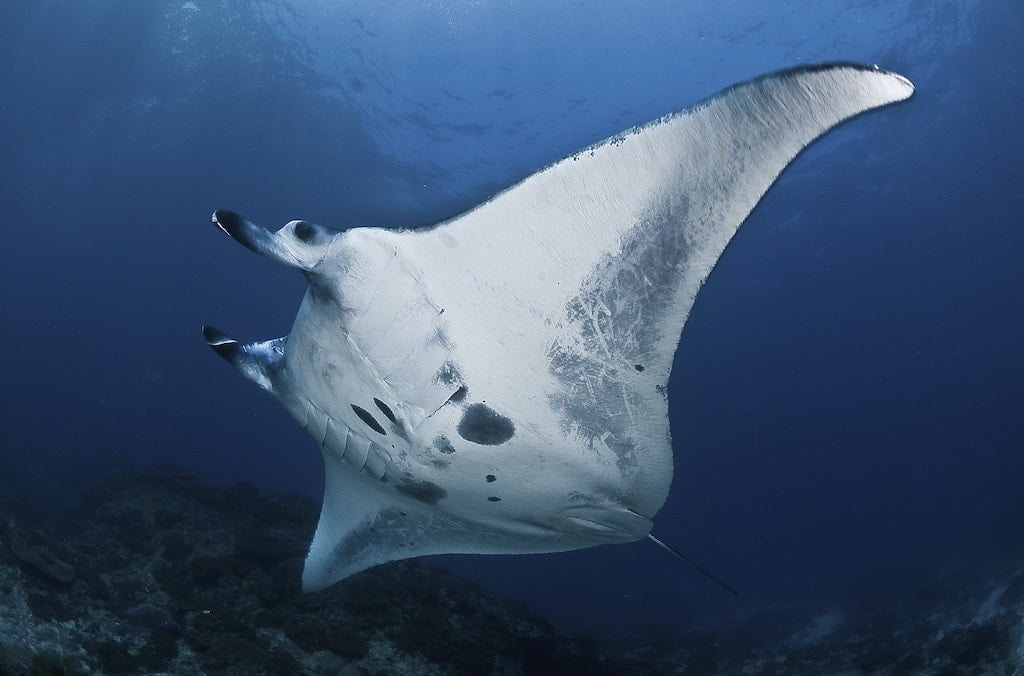
Oceanic or reef manta ?
There are two distinct types of mantas: the oceanic manta ray or giant manta ray (birostris) and the reef manta ray (alfredi). The variety of manta ray that is typically spotted in Bali, particularly in Nusa Penida, is the reef manta ray. These magnificent creatures boast a wingspan that can span up to 5 meters, pectoral fins, horn-shaped cephalic fins, a large mouth that faces forward, and five pairs of gill slits on their ventral surface.
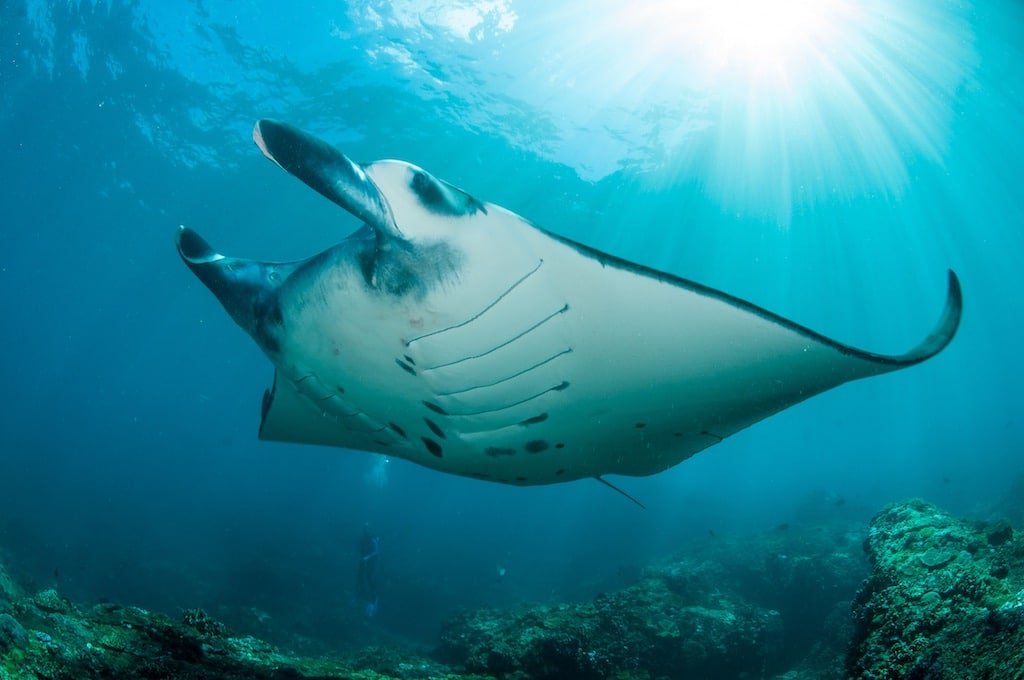
Typically, the backs of these creatures are black in color. However, their underbellies are white and feature distinct black markings that form a unique pattern, akin to a fingerprint.
Nusa Penida is also home to Mobula rays, which are smaller and can occasionally be mistaken for juvenile manta rays. One distinguishing feature is the location of their mouth, which is on the underside of their body. They also have a noticeably shorter tail.
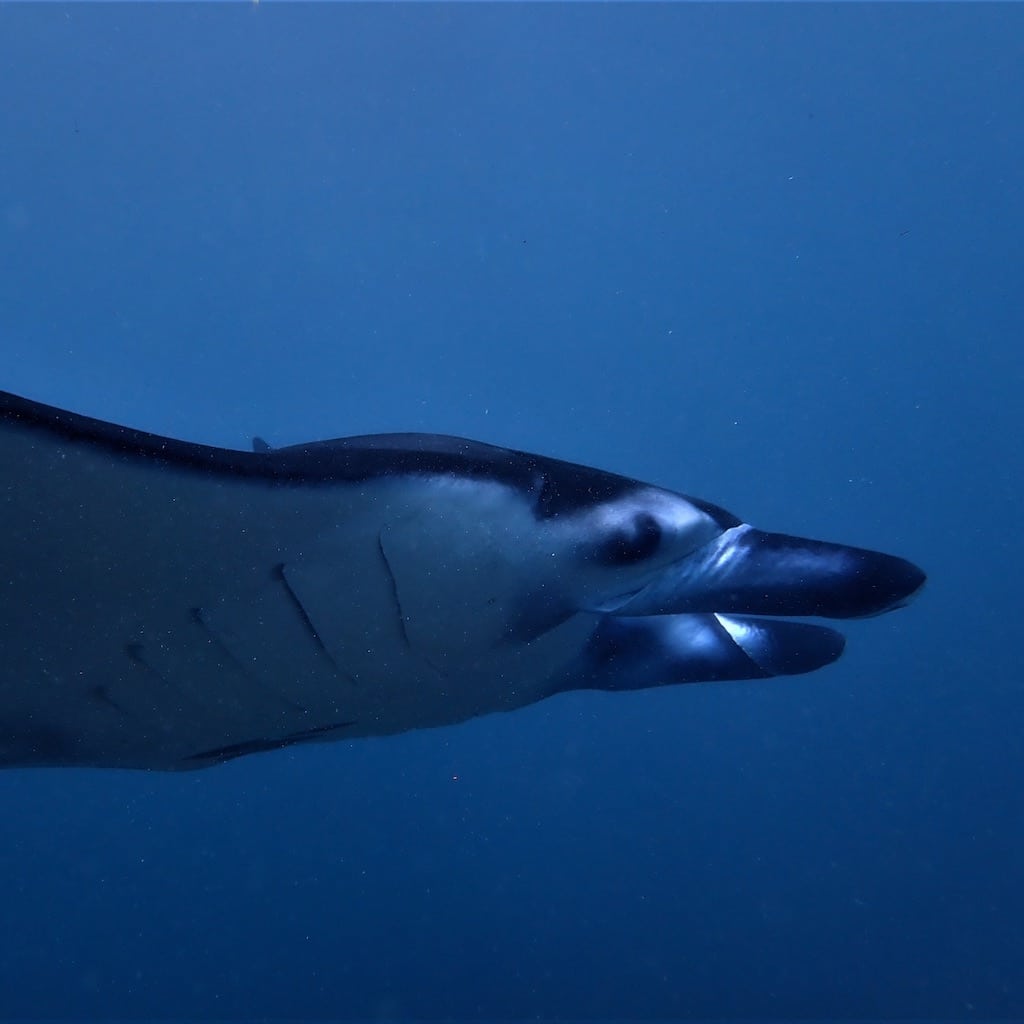
Where do manta rays live?
Manta rays can be found in warm temperate, subtropical, and tropical waters. The oceanic manta ray migrates across open oceans, while the reef manta ray tends to live closer to the coast. In fact, they can sometimes stay in the same location all year round, such as at Nusa Penida, where they visit cleaning stations at Manta Point daily to remove parasites. When the reef mantas venture further from the coast, they can dive as deep as 400 meters.
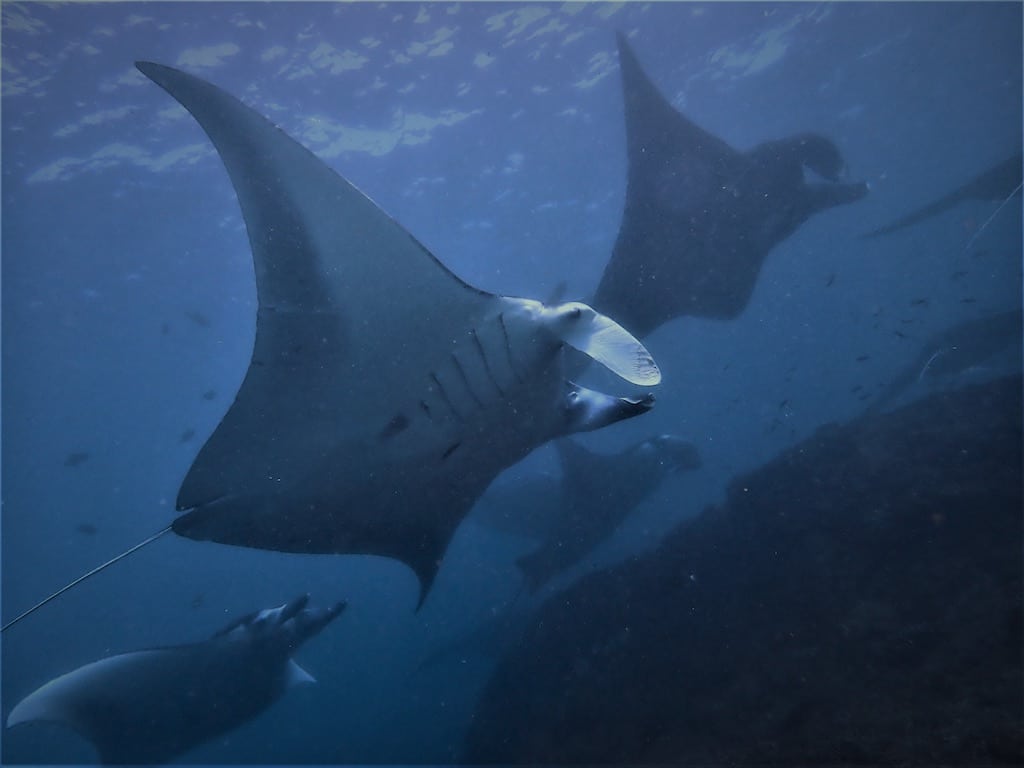
What is a manta ray cleaning station ?
A manta ray cleaning station is a specific location where manta rays congregate to receive cleaning services from fish that remove parasites from their bodies, mouths, and gills. These stations are typically found at the top of coral heads. The rays circle around while the cleaning fish perform their duties. The relationship between the rays and the cleaning fish is an example of symbiosis.
Manta rays can often be found in groups around the station, although they may also be seen alone. These groups can consist of dozens of individuals.

Can Manta Ray fly ?
Occasionally, some manta rays will jump out of the water partially or entirely. There are several possible explanations for why they do this. Some speculate that it may be a way to rid themselves of parasites. But others suggest it could be part of mating rituals or a mode of communication.
This phenomenon is called breaching, and seeing a manta ray fly out of the water in real life is as impressive as it sounds!
Watch the videos of manta rays breaching and read why experts think they do it here !
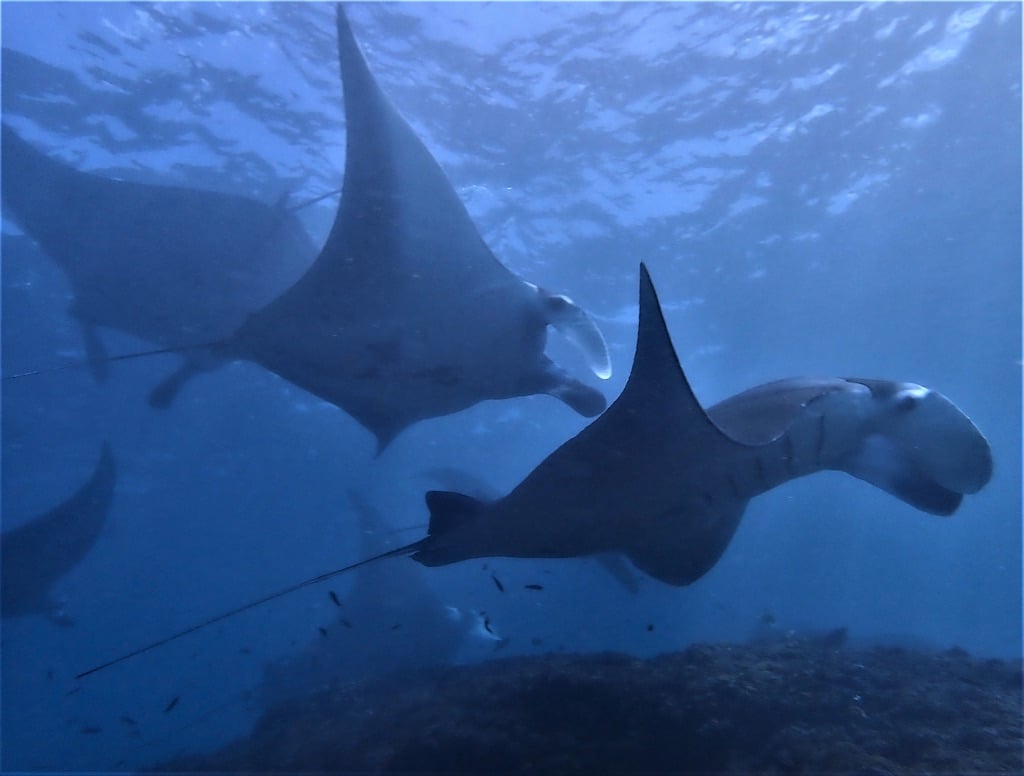
What does manta ray eat ?
Manta rays primarily consume plankton, including shrimps, krill, and planktonic crabs, making them a suspensory animal. On average, a manta ray consumes approximately 12% of its own body weight each week.
To locate their prey, manta rays use their sense of sight and smell. They swim slowly towards their food and use their cephalic fins to direct the plankton towards their wide-open mouths. Water is then filtered through their gills before being released. Interestingly, when manta rays swim without eating, they roll up their cephalic fins into a helical form to reduce drag and increase their hydrodynamic efficiency.
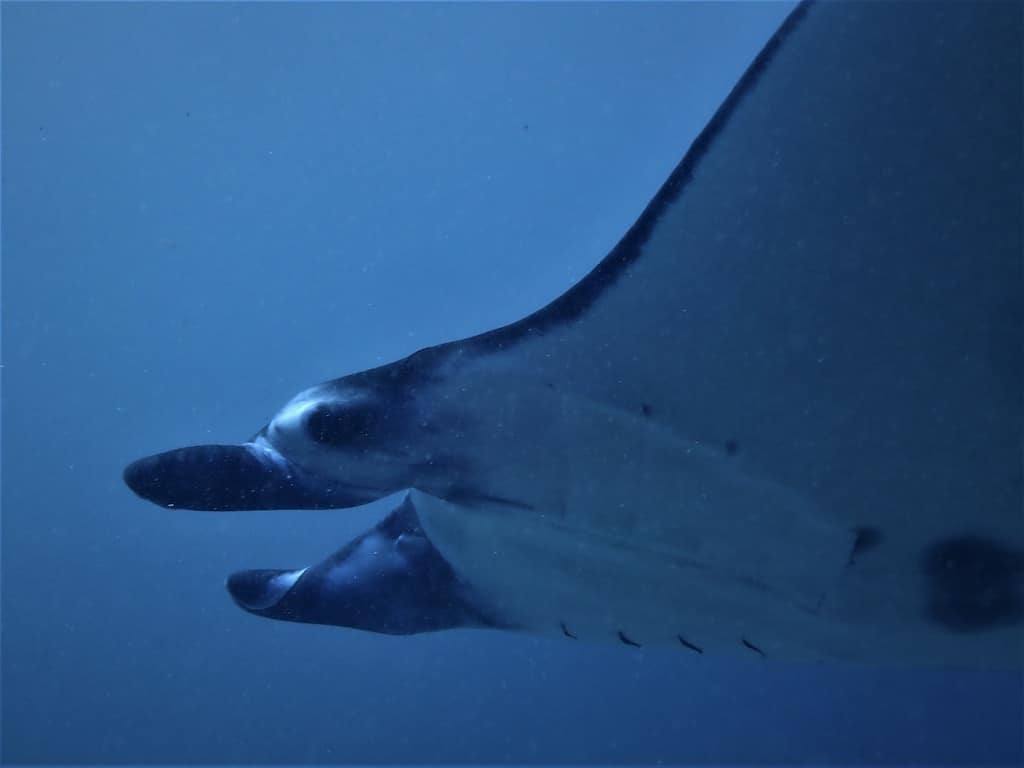
What about the baby manta rays?
Manta rays are ovoviviparous. This means they are fish that produce eggs which hatch inside their body. The gestation period for a baby manta ray lasts over a year. At birth, they measure between 1.30 to 1.50 meters. But within a year, their size doubles. Manta rays are estimated to reproduce every five years and have a life expectancy of 50 years. During the breeding season, these creatures return to the open sea, and Manta Point may sometimes be deserted.
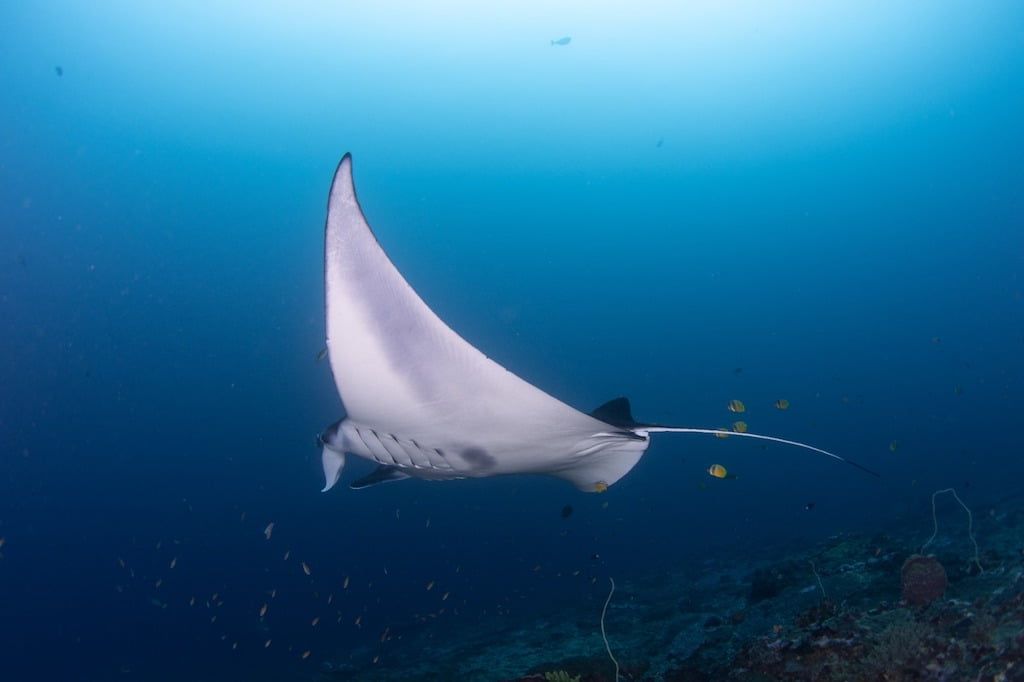
Are manta rays dangerous ?
No, manta rays are not dangerous. Although they may come close to you, they will avoid contact. However, it is essential to refrain from touching them or attempting to do so, as with any sea creature.
Are manta rays endangered ?
The reef manta ray has no natural predators, except for some large sharks, due to its size and quick escape ability, reaching speeds of 24 km/h. Nevertheless, manta rays are classified as vulnerable by the Convention on Migratory Species, with overfishing, pollution, and global warming as the main threats. In 2014, Indonesia banned fishing and export of manta rays, making it the world’s largest sanctuary for these creatures, covering 5.7 million km2 of oceans.
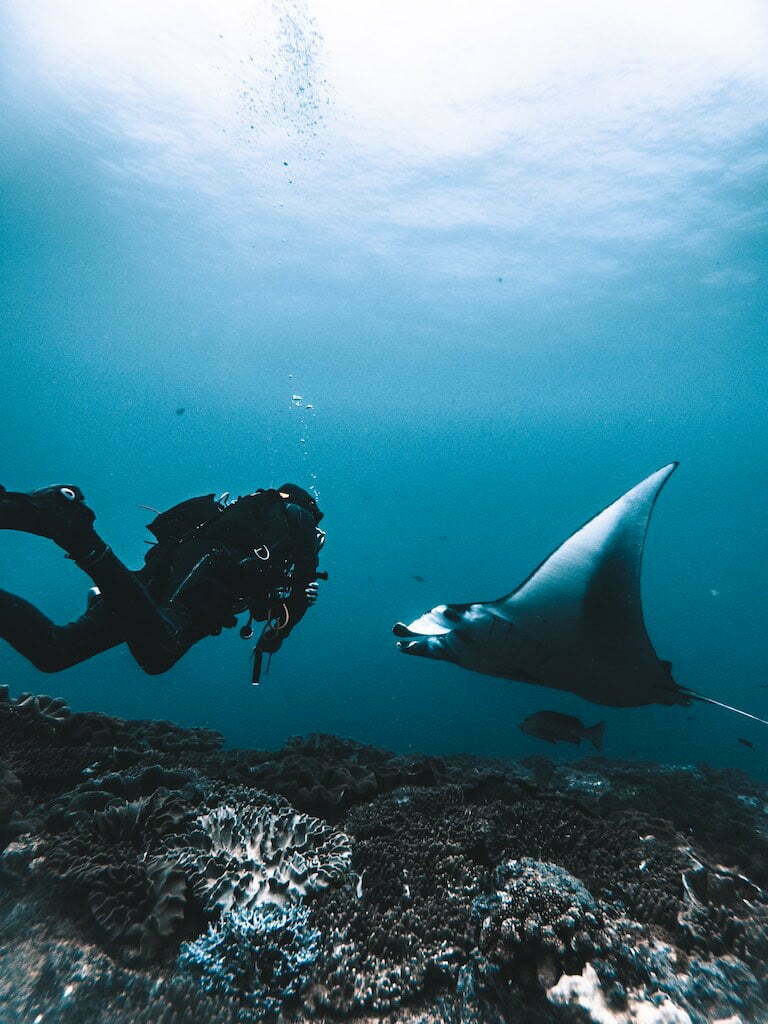
Where are Manta rays in Bali ?
There are two primary locations for diving with manta rays in Nusa Penida, Bali. Manta Point cleaning stations are situated on the southwest coast of the island. About 45 minutes away by boat from Toyapakeh port. However, you may also encounter them occasionally at one of the many dive sites scattered around Nusa Penida.
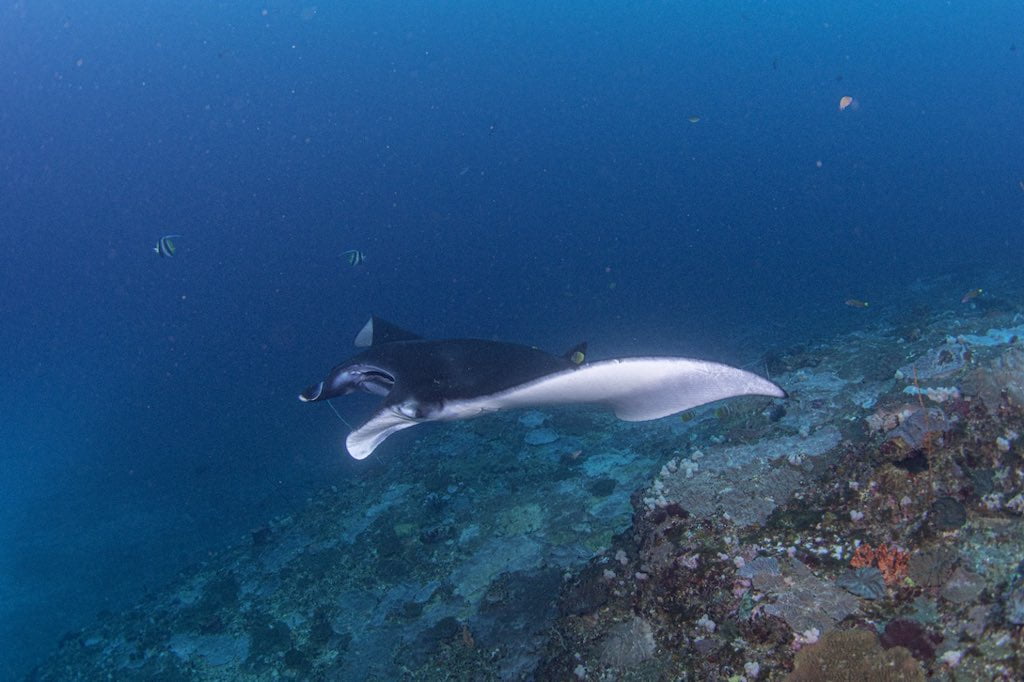
Manta Point is an ideal location for viewing mantas. During the non-breeding season, you have a high probability of seeing these majestic creatures, with a success rate of around 95%. Moreover, you may have the opportunity to spot them from atop the Nusa Penida cliffs. But it’s not possible to descend to any beach from the cliff to swim with them.
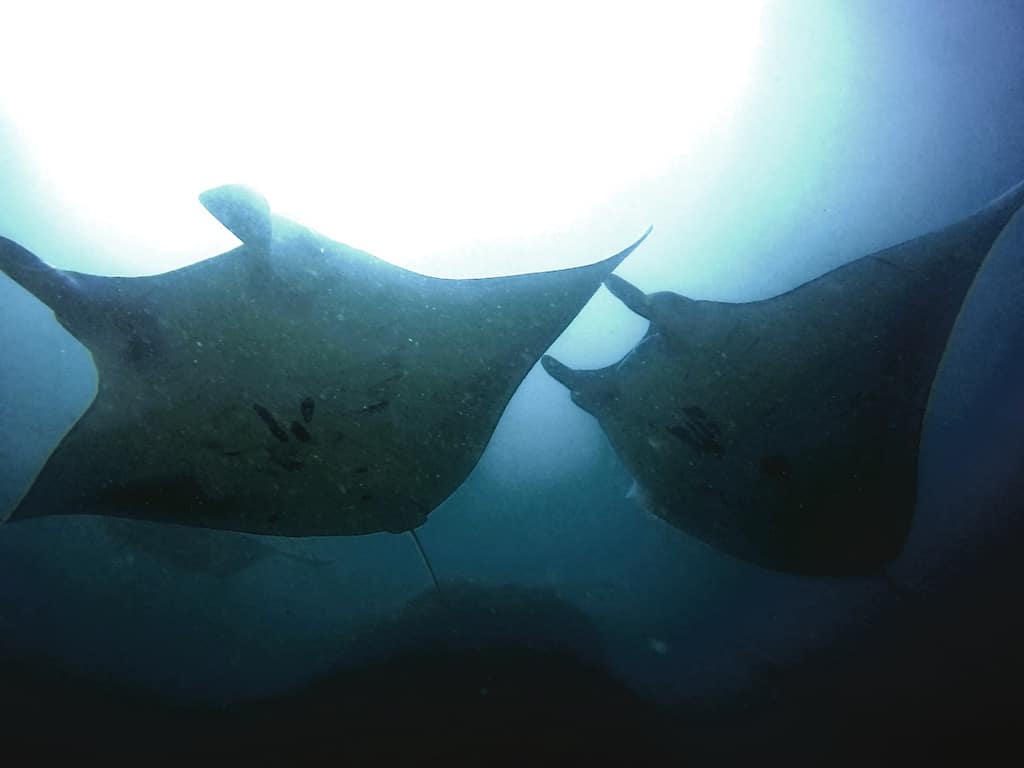
Some dive centers opt to stop at Manta Bay in order to shorten the trip and save on fuel costs. However, the probability of encountering manta rays at this location is relatively low. Around 80%, due to the presence of numerous snorkeling boats actively pursuing them. Additionally, unlike the dive site at Manta Point, the underwater topography and marine life at Manta Bay are not particularly noteworthy or compelling.
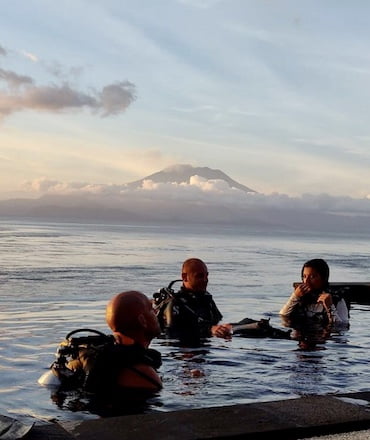
Dune Penida dive resort
The Adiwana Warnakali hotel is home to the Dune Penida PADI 5-star dive center, in an exceptional location, perched above Toyapakeh harbor on Nusa Penida island.
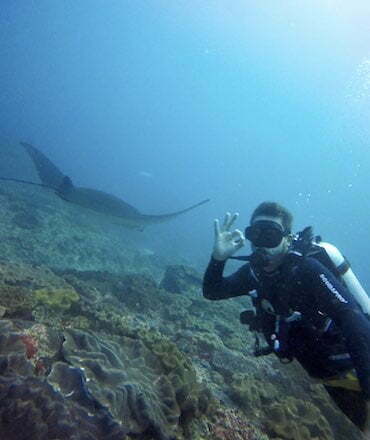
Best dive sites in Bali
20 best dive sites in Bali around Nusa Penida, in Padang Bay and North Bali : read everything about manta rays, oceanic sunfish, sharks & more.
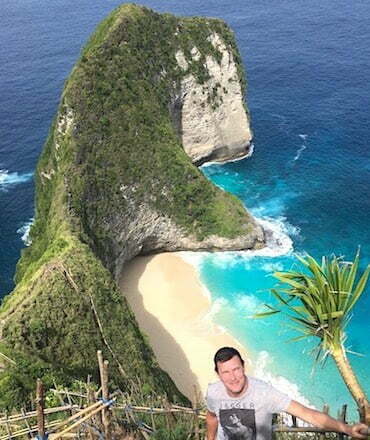
Top 15 to see in Nusa Penida
After 30 visits to Nusa Penida I updated my list of 15 awesome sites so see in Nusa Penida island : beaches, temples, cliffs, dive sites and many more !
 Nusa Penida !
Nusa Penida !